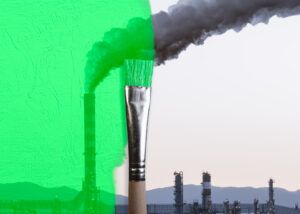The complexity and diversity of the materials industry means it has particular, and very impactful, ESG risks associated with it, according to investment professionals analysing the sector.
Comprising mining, forestry, construction, chemicals, glass, and basically anything you can make something with, the sector has a huge environmental impact, as well as causing labour rights and governance concerns, they said.
“Given the nature of the sector and its significant environmental footprint, in combination with the risk of catastrophic events such as tailings spills, issues such as emissions, effluents and waste are weighted heavily in Sustainalytics’ ESG Risk Rating model,” said Dana Sasarean, Sustainalytics’ associate director of mining and metals research.
But it is also unique when it comes to ESG because its risks, concerns, impacts and solutions are so broad. Sasarean added human rights “represent another aspect that transcends environmental and social issues”, particularly with indigenous communities or artisanal and small-scale miners.
Positive players
Sasarean says best practice in the sector includes independent certification and adopting international management standards.
“Since mining cannot occur without water, water risk management is key in the context of shrinking water availability and competing needs from agriculture and residential use”, she said.
“In fact, community relations is perhaps one of the most complex issues, and this issue is heavily weighted in our model given the important role of social license to operate in natural resources projects and expansion success. Failure to meet local community expectations can lead to strong opposition to mining projects and, in extreme cases, to violence and clashes with security forces, which are often followed by investigations and lawsuits.”
See also: – Tech risks could turn the sector into a ‘sustainability disaster’
Similarly, on human rights issues, Sasarean said leading companies are those that are proactively engaging with communities.
When it comes to those materials companies providing specific ESG solutions, MainStreet Partners’ research director Susana Coutinho identifies DSM, the science-based company that manufactures nutritional and pharmaceutical ingredients; Johnson Matthey, the specialty chemicals company, which manufactures pharmaceutical materials and pollution control systems; and Mondi, a globally integrated packaging and paper group, as positive players.
In ESG Clarity’s second sector special episode of ESG Out Loud, we spoke to Albert Douer, co-CEO of UBQ Materials, which classes itself as a solutions company, as it repurposes many kinds of waste materials into substitute plastics and products to be used in manufacturing. Hear what Douer has to say about ESG investing and the materials sector here.
“I really like the fact some potential harmful materials can actually become an input for other sectors, for instance by-products of industries can become raw materials for other sectors,” Coutinho also said in the podcast.
Improvers
Coutinho also pointed out materials companies making strides in sustainability. “Big miners and chemical companies have traditionally been identified as poor performers in this space, nevertheless we noted some with positive achievements,” she said.
Mining company Barrick Gold’s 2020 sustainability report showed significant advances in ESG performance, from improved water management in Tanzania to innovative rehabilitation plans in North America, she said. Its ultimate aim is to achieve net-zero emissions by 2050.
Meanwhile, Brazilian petrochemical company Braskem’s bio-based plastic made from sugarcane, is considered sustainable. In May 2020, the company was recognised by the United Nations Economic Commission for Latin America and the Caribbean, and the Global Compact Network Brazil, as one of the most transformational cases in sustainable development in the industry and energy category.
Rio Tinto has also been focusing on reducing its greenhouse gas emissions, Coutinho said. In 2020, 75% of electricity used at managed operations came from renewable sources. It has pledged to become a net-zero company by 2050 and plans to spend $1bn on climate-related projects by 2025.








